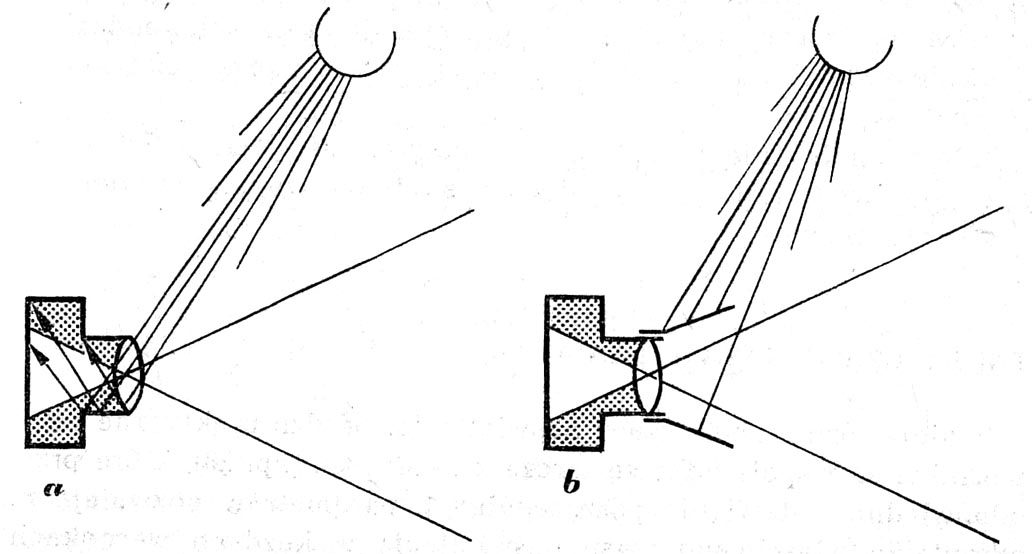SUN SHADES
Modern lenses are built into frames that protrude far in front of the front lenses, which protects them from the rays, not involved in the creation of the image.
Depending on the focal length and image format, the angle of view of the lens, even with wide-angle lenses, is much smaller than the angle formed by the rays incident on the lens; this angle depends mainly on the depth, on which the outer lens of the objective lens is located in the frame.
Only very bright lenses built into flat cameras sometimes have such a shallow frame, that the angle of incidence of the rays on the lens is sometimes greater than 150°, of which the rays forming the image usually cover an angle of approx. 50—60°. The rest of the rays are not only completely redundant, but downright harmful. These rays, penetrating deep into the lens, are refracted and reflected at different angles by the lens of the objective lens and its frame. A large part of them gets inside the camera, giving various types of more or less clear reflections on the film, which degrade the clarity of the image, and sometimes they even create light patches.
Reflections on the glass surfaces of the camera are largely prevented by covering the surface of the lens elements with an anti-reflection layer, but even then, the harmful effects of the rays cannot be completely eliminated.
To completely remove reflections, lens hoods are used, in the form of deep tubes made of black lacquered sheet metal or plastic mass (drawing).

Drawing. The operation of the sun visor: a - no cover, b - with cover.
They must be calculated that way, so that they do not cut off the rays needed for the formation of the image, because if the guard is too deep or too small in diameter at the front, the corners after film development will be transparent, and the entire image at the edges will be underexposed. The shield must even admit a certain reserve of rays, to prevent surprises in the form of decreasing image brightness at the edges. So that it does not give reflections, any abrasions to the black paint inside the cover, any shiny places must be carefully painted over with black matte varnish.
Even the best cover doesn't help, when the sun's rays fall directly into the lens. In fact, sunscreen should be used at all times, it increases the clarity of the image, and with pictures by the sea, on snow, in the mountains, everywhere there, where there is a lot of light and a lot of surfaces that reflect the sun's rays, it is almost essential.